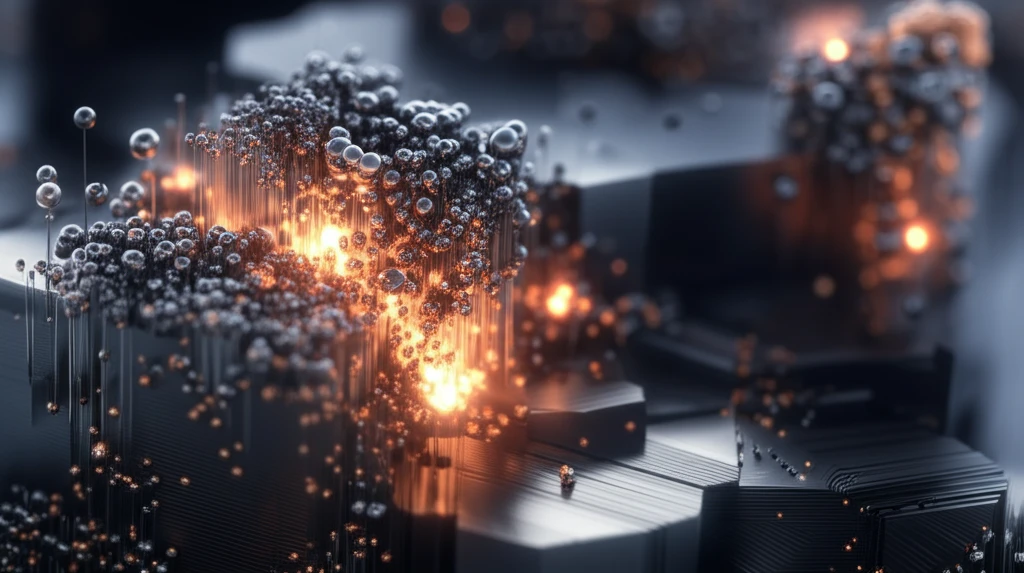
Unlocking Steel's Secrets: How Nanoparticles Can Revolutionize Material Strength
"Delving into the atomic world of steel, this research reveals how nanoscale manipulation can lead to stronger, more durable materials perfect for future innovations."
For ages, engineers and material scientists have chased after stronger, lighter, and more durable materials. Steel, a cornerstone of modern infrastructure, has always been at the forefront of this quest. The secret? Manipulating matter at the nanoscale. By controlling how atoms arrange themselves, it's possible to unlock properties we never thought steel could possess.
Imagine steel that can withstand extreme conditions, build structures that last for centuries, and create vehicles that are safer and more efficient. This isn't science fiction; it's the promise of nanoparticle-strengthened steel. Recent studies have focused on how adding and controlling tiny particles within steel can dramatically improve its strength and resistance to wear and tear.
One fascinating area of study involves adding copper (Cu) and nickel-aluminum (NiAl) nanoparticles to steel. These aren't just sprinkled in; they're strategically placed and controlled to create specific microstructures that enhance the steel's overall performance. Understanding this process could revolutionize industries ranging from construction to aerospace.
The Atomic Recipe: Cu and NiAl Nanoparticles

The original research paper uses a technique called atom-probe tomography (APT) to examine the arrangement of atoms within the steel. Think of it as an incredibly powerful microscope that can identify and map individual atoms. Through this method, scientists can observe how Cu and NiAl nanoparticles behave within the steel's structure, specifically in different phases known as martensite and austenite.
- Martensite: Features both NiAl nanoparticles and NiAl/Cu co-precipitates.
- Austenite: Contains only Cu nanoparticles with Ni segregation at the particle/matrix interface.
- Interface Segregation: Manganese (Mn) and Carbon (C) concentrate at the martensite/austenite interface.
- Nanoparticle Size: Impacts the overall strengthening effect on the steel.
The Future of Steel: Stronger, Lighter, and More Sustainable
This research is more than just an academic exercise; it has real-world implications. By understanding the fundamental mechanisms that govern nanoparticle precipitation and interfacial segregation, engineers can design new types of steel with unprecedented properties. This could lead to stronger bridges, lighter vehicles, and more sustainable infrastructure, transforming industries and improving our lives.
